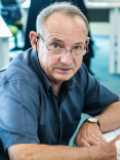
Imagine you have an important decision to make. Do you carefully consider the long-term implications of each possible option or do you act impulsively? Would you approach the decision-making process differently if the consequences stretched out to 30 or even 50 years?
Urban, spatial and land use planning professionals repeatedly find themselves in this predicament. There are significant and long-lasting economic as well as environmental impacts of the decisions that are made with respect to transportation, energy, waste, water, buildings and infrastructure. Yet, many land-use interventions do not properly account for environmental consequences. The decisions made regarding where and when roads are built, and the density, type and location of buildings all have long-term impacts on air pollution, greenhouse gas emissions, biodiversity and water use. Even seemingly indirect or unrelated decisions on the taxation of property can have a significant impact on environmental outcomes. As a result, the innumerable decisions related to land use – both big and small – need to be made so that growth is green.




The GGKP Knowledge Partner, CDKN attended the Global Green Growth Week was held in Jeju, Republic of Korea, 5-9 September. The is the first of two blogs reporting from the event, by Ari Huhtala, CDKN’s Deputy CEO for Policy and Programmes.
The Global Green Growth Summit, held in Jeju on 8 September and organised by the Global Green Growth Institute (GGGI) had chosen “Towards a green finance action agenda for 2017” as its topic. The leading question at the outset was “The world is awash with money, but where are the bankable projects for green investments?”



In December 2015, one of us was in Paris for the first working day after the historic climate change agreements. The Secretary General of the Organisation for Economic Co-operation and Development (OECD), Angel Gurria, had called a group together to “begin the task of changing economies so that they deliver on our climate agreements.” We asked ourselves, “How can we shift economies off their heavy use of the fossil fuels that cause damaging climate change, and encourage economic activities that help us to be resilient to at least a 2-degree temperature rise?”
The last few years have given us some experience to build on. The financial crisis of 2008 saw many governments wondering how to boost faltering economic growth, and to create more jobs. Some countries such as Germany, Denmark, and Korea responded with “green stimulus” packages.
They had noted that there was good business to be done in clean technology production and in installing efficient transport and energy infrastructure. They chose to focus their fiscal stimulation on the new “green goods and services” sector of the economy.

